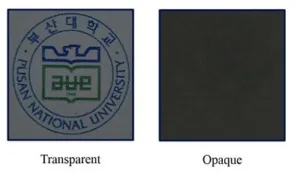A team at Pusan National University (Korea) has developed a liquid crystal (LC) technology that can switch between transparent and opaque states, quickly.
Existing transparent displays are constantly open to the background, and so visibility can be poor. Brightness is an issue, especially in high ambient light environments.
Light shutters are a potential solution – these use LCs that can switch between transparent and opaque states by scattering or absorbing incident light. However, they have their own problems; specifically, black cannot be achieved with scattering-based shutters, while absorption shutters are not completely opaque. They are also not particularly energy-efficient and have a slow response time.
The Pusan group says that it has fixed all of these problems by using scattering and absorption simultaneously. Polymer-networked LC cells doped with dichroic dyes were used to do this. The polymer network structure scatters incident light, which is then absorbed by the dichroic dyes.
The shutters use a parallel pattern of electrodes, above and below the vertically-aligned LCs. An electric field, applied through the electrodes, aligns the axes of the dye molecules with the oncoming light to absorb and scatter it. This effectively renders the display opaque, and images are fully visible.
Light passes through while the screen is in its resting state, unlike conventional shutters which require a constant flow of power to maintain their transparency. Power is instead required while the screen is opaque. Response time is said to be sub-1ms. Conventional shutters are slower, as they rely on the slow relaxtion of LCs.
Future work involves increasing and decreasing the device’s transmittance in transparent and opaque states, respectively. The group will also work on a bi-stable light shutter, which only consumes power while switching between transparent and opaque states.
The research was published in AIP: http://tinyurl.com/ndo4bt6.

